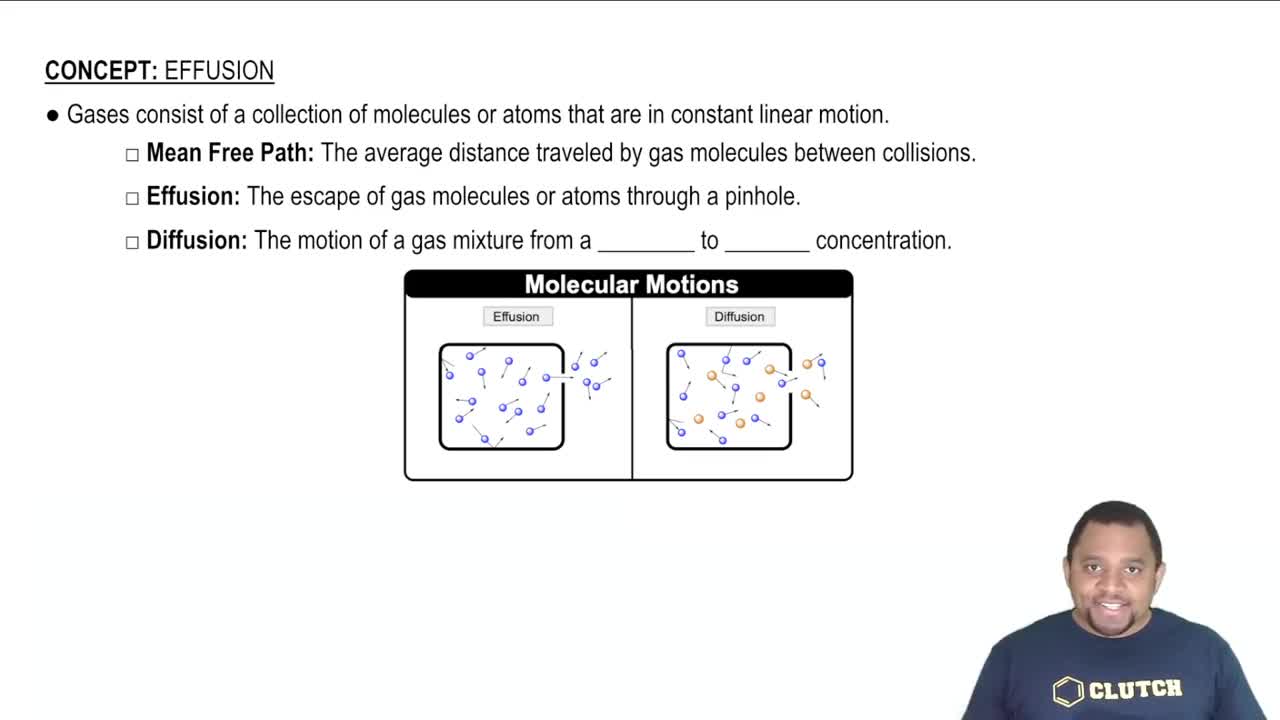Here are the essential concepts you must grasp in order to answer the question correctly.
Entropy
Entropy is a measure of the disorder or randomness in a system. In thermodynamics, it quantifies the number of possible arrangements of particles in a system, with higher entropy indicating greater disorder. Understanding how entropy changes during chemical processes helps predict the spontaneity and direction of reactions.
Recommended video:
Entropy in Thermodynamics
Photodissociation
Photodissociation is the process by which a chemical compound is broken down into its components by the absorption of light. In the case of O₂(g), this process involves the breaking of the O=O bond, leading to an increase in the number of gas particles, which typically results in an increase in entropy due to greater molecular freedom.
Diffusion
Diffusion is the movement of particles from an area of higher concentration to an area of lower concentration, driven by the concentration gradient. This process increases the entropy of a system as particles spread out and occupy a larger volume, leading to a more disordered state. In the context of CFCs diffusing into the stratosphere, this results in an increase in entropy.
Recommended video:



